Shapes in Symmetry
Shapes in Symmetry
2018
ADM Gallery 1
School of Art, Design and Media
Nanyang Technological University, Singapore
Curated by Michelle Ho
Grace Tan’s presentation of six new works combine her research of the use of blue pigments in historical works of art, and her exploration into methods of construction. At times, her sculptures appear as specimens, as part of the artist’s way of testing theories and processes of construction, and examining properties of a given material, while documenting their progression and transformation. In this exhibition, Tan’s works are primarily based on the principles of symmetry and the antecedent balance they provide, with her sculptures that are formed without supporting reinforcements.
Much of her constructions are based on the angle of repose in building theory, which refers to the formation of a slope of a structure between 0° to 90° that can hold without collapsing. Tumuli, a series of four sculptures that comprise of different base shapes, are formed without adhesive material. Made of dyed gofun pigment powder, most known in Japanese nihonga painting, the works also demonstrate one of the rules of the angle of repose that the base shape of a structure can determine its overall formation.
This can also be seen in Hearth, a work in cobalt glass that combines the two geometric forms of the square and circle to contain both cube and cone within one form. Pentahedron [Prism and Pyramid] looks at triangular five-faced structures in expanded dimensions, whereby Tan intersects the two shapes to separate one into positive and negative sections.
The partition of spatial dimensions is also considered in Quadrants. Consisting of particles of azurite minerals, also known as the Japanese gunjo pigment that is associated with Chinese landscape painting, Tan has configured them into 80 sculptures to present a spectrum of blue hues to illuminate the densities of the pigment. Similarly, works such as Cross Sections and Tectonics, which are made of ultramarine and indigo pigments respectively, explore other models of construction, with symmetrical balance as a core principle.
Hearth
2018
9 I-Beams with cobalt blue glass chips
Dimensions Variable
Tumuli
2018
4 sculptures in acrylic and dyed gofun pigment
Dimensions Variable
Cross Sections
2018
Sculpture in acrylic and natural ultramarine [lapis lazuli] pigment
30 x 10 x 10 cm
Quadrants
2018
80 sculptures in acrylic and engineered gunjo mineral pigment
Dimensions Variable
Tectonics
2018
Sculpture in paper and natural indigo pigment with cowhide glue binder
6 x 30 x 30 cm
Pentahedron [Prism and Pyramid]
2018
20 diagonally cut I-Beams and a sculpture in mild steel
Dimensions Variable [Prism]
111.3 x 60 x 97.8 cm [Pyramid]
Source: Michelle Ho / ADM Gallery
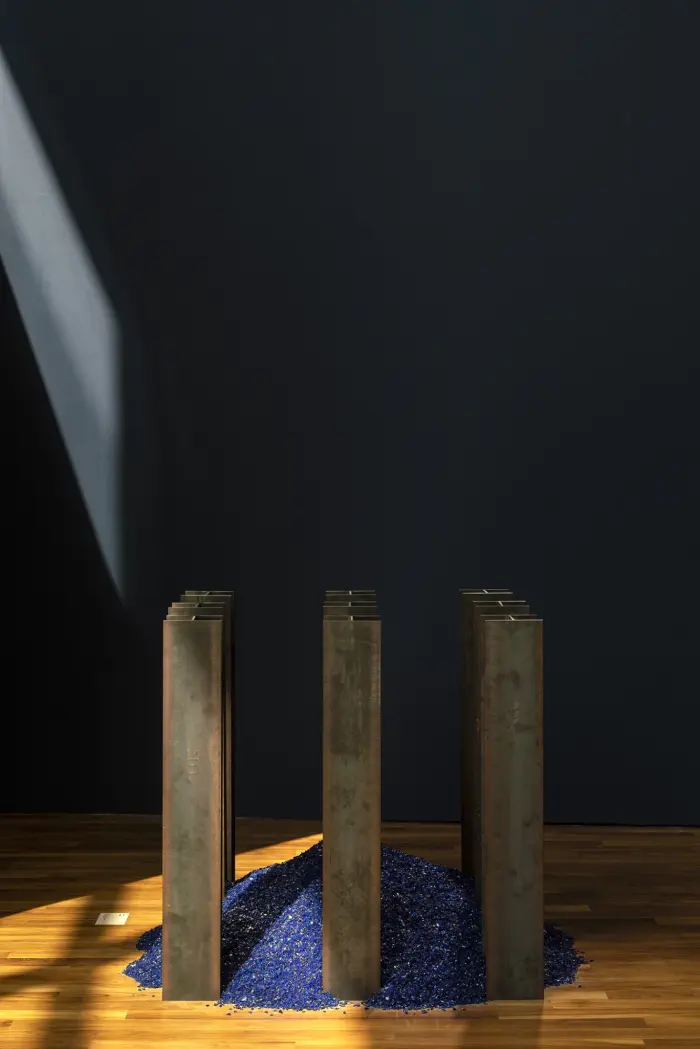
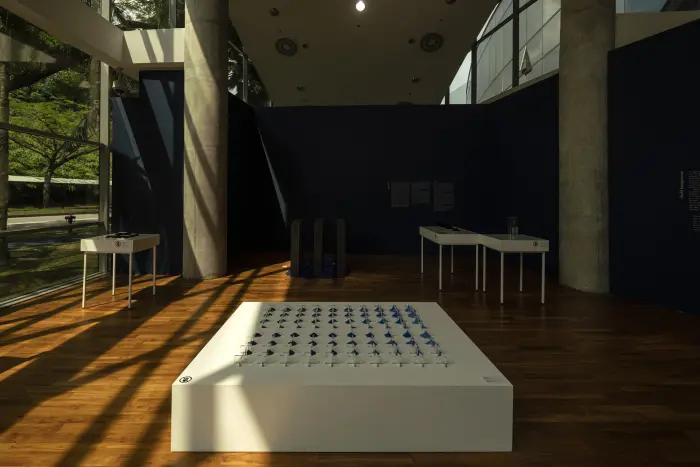
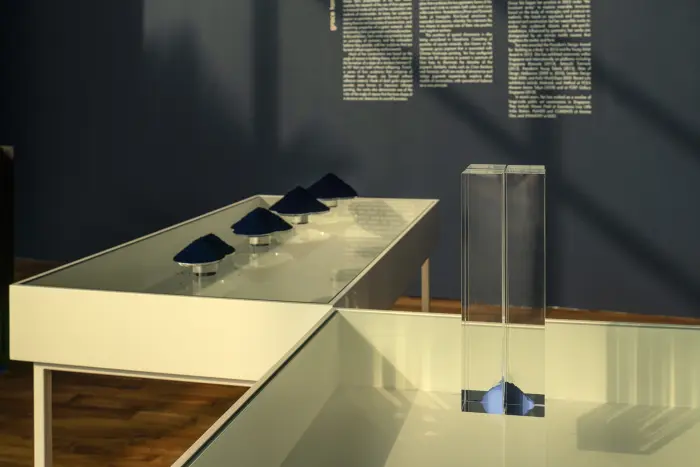
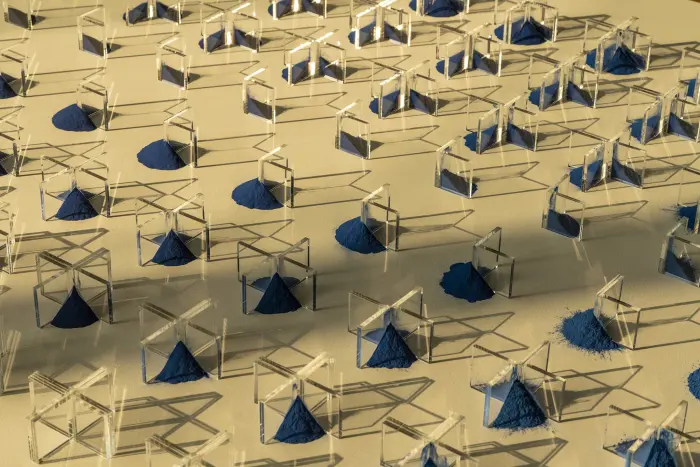
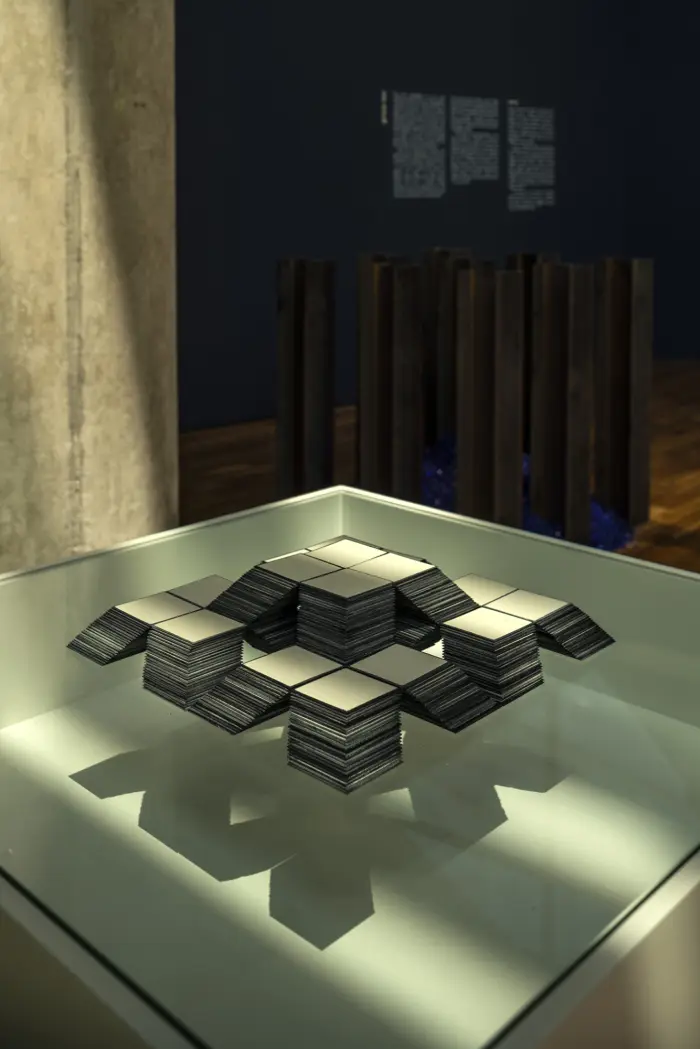
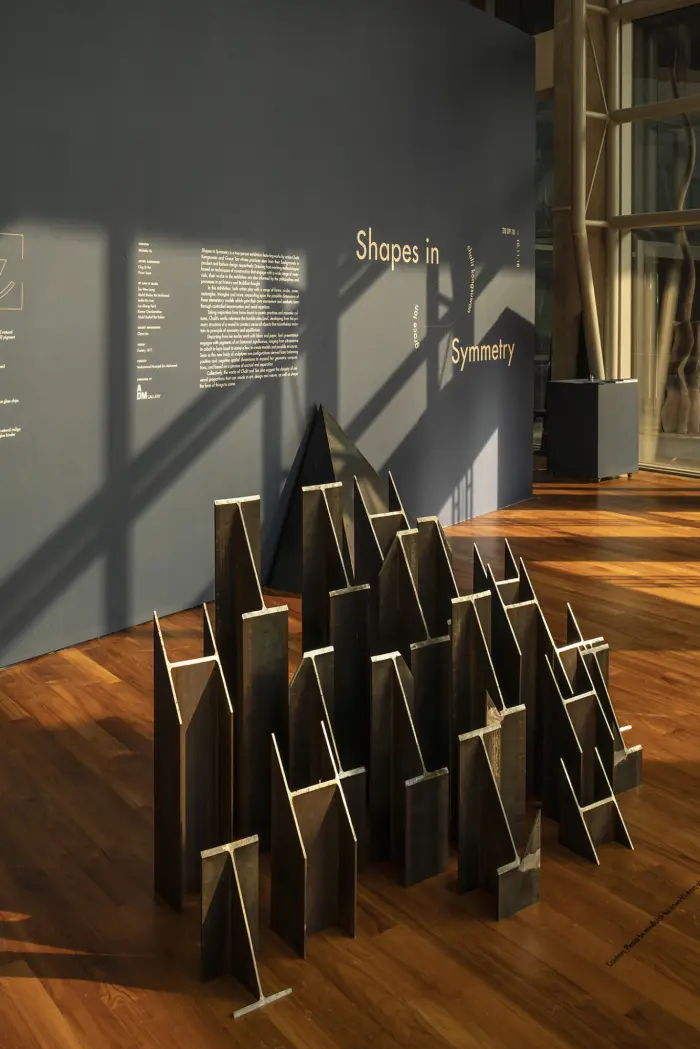
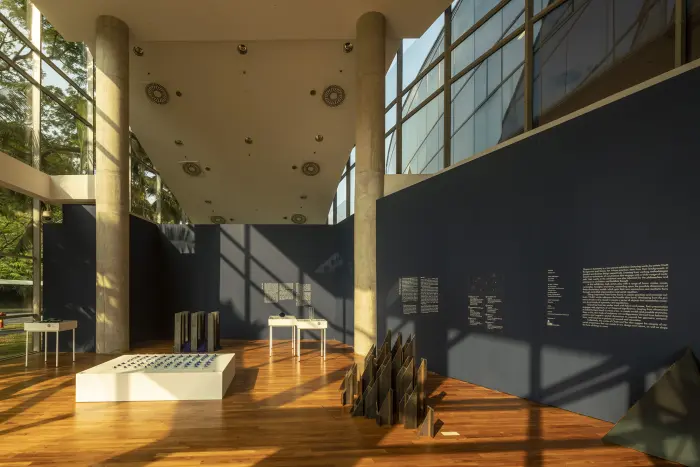
Photography by Darren Soh